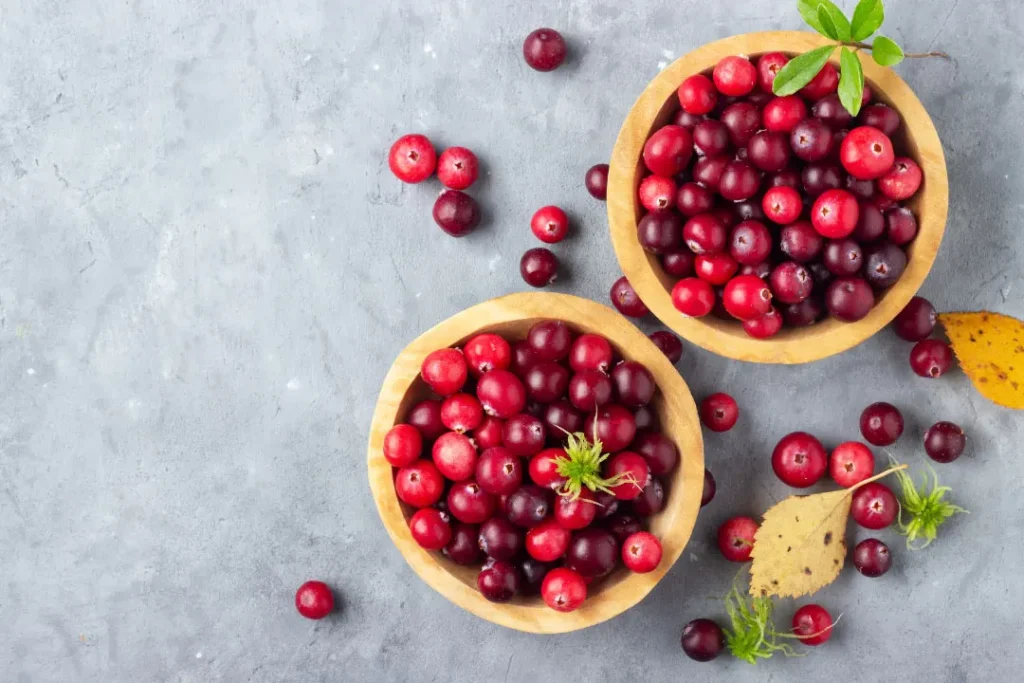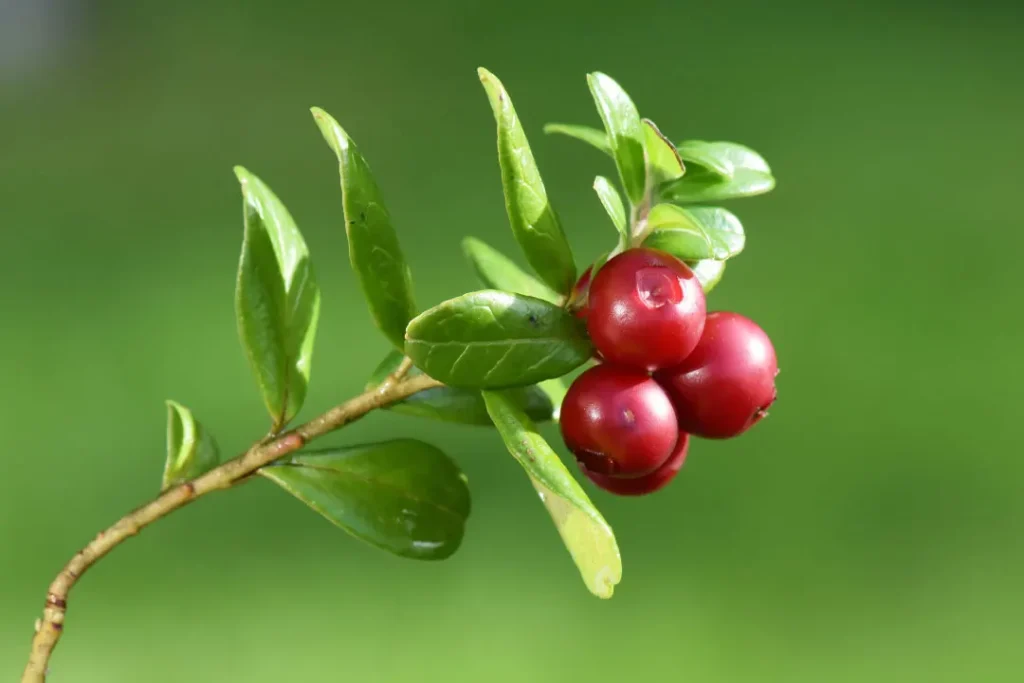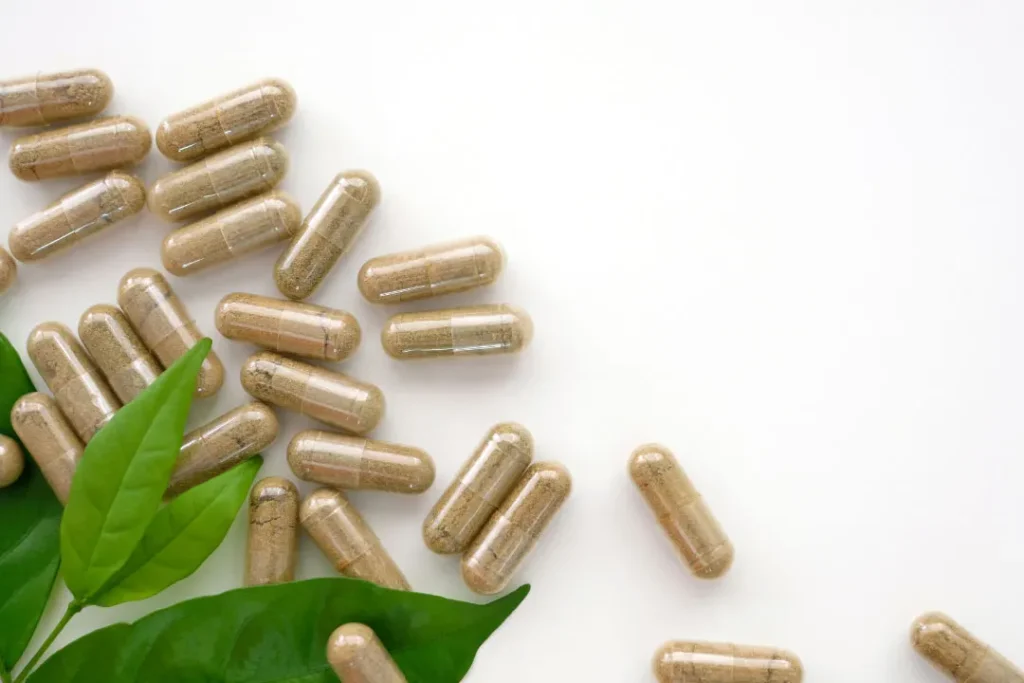Cranberries are tiny, sour berries indigenous to North America. They are also known as vaccinium macrocarpon. The distinctive combination of bioactive chemicals in cranberries has attracted significant interest for their health advantages. This article will cover the nature of cranberries, their health advantages, the best dosage, potential side effects, possible drug interactions, and safe use techniques. This article explores the intricate chemistry of cranberries and the physiological processes that can affect the body and brain.
You May Also Like:
Chicory: Benefits, Dosage, Side Effects, Drug Interactions, and Other Important Information
Tryptophan: Benefits, Dosage, Side Effects, Drug Interactions, And Other Important Information
Nature of Cranberries
The ericaceae family of tiny, crimson fruits includes cranberries. Native American cultures have long used them as a food source and for their therapeutic benefits. Cultivated in the marshes of North America, these berries are particularly renowned for their strong antioxidant abilities. Cranberries are abundant in several crucial elements, such as vitamin C, fiber, and manganese.

Health Benefits of Cranberries
Cranberries have a rich nutritional profile and a high concentration of bioactive chemicals, contributing to their wide range of health advantages.
Healthy Urinary Tract
Cranberries are known best for maintaining the health of the urinary system. Proanthocyanidins (PACs), which are present in cranberries, aid in preventing the adherence of some dangerous bacteria, such as escherichia coli, to the urinary tract wall, leading to urinary tract infections (UTIs)[1].
Circulatory Health
Additionally, cranberries are beneficial to cardiovascular health. They include strong antioxidants such flavonoids that, by inhibiting LDL oxidation, can decrease blood pressure and minimize the risk of developing cardiovascular diseases[2].
Cranberries can improve dental health. The streptococcus mutans bacterium, which is predominantly responsible for dental plaque and tooth disease, is prevented by the PACs in cranberries[3].
Chemistry of Cranberries
Cranberries have numerous bioactive substances, which adds to their health-promoting properties. Proanthocyanidins (PACs), phenolic acids, and flavonoids (such as anthocyanins, flavonols, and flavan-3-ols) are important compounds[7].
Cranberries’ distinctive red color is caused by anthocyanins, which also contain strong anti-inflammatory and antioxidant properties[12]. Quercetin and myricetin are two flavonols associated with improving cardiovascular health because they reduce inflammation and oxidative stress[13].
Proanthocyanidins found in cranberries, type-A PACs in particular, have an anti-attachment property that helps inhibit the adhesion of certain bacteria, such as E. coli, to the walls of the urinary system, hence assisting in the prevention of UTIs[14].
Phenolic acids that include vanillic, benzoic, and p-hydroxybenzoic acids support cranberries’ antioxidant abilities and can have anti-carcinogenic properties[15].


Physiological Properties of Cranberries
The physiological effects of cranberries’ bioactive components are responsible for their health advantages.
Cranberry PACs’ anti-adhesion function is crucial for the health of the urinary tract. These substances hinder bacterial colonization and the emergence of UTIs by preventing E. coli bacteria from adhering to the walls of the urinary tract[1]. Similar anti-adhesion properties are at work in oral health, where PACs prevent streptococcus mutans from forming, lowering the development of dental plaque and tooth decay[3].
Cranberries’ flavonoids promote cardiovascular health in various ways. They can improve blood lipid profiles, lower oxidative stress, and inflammation, and boost endothelial function[2]. All of these systems work together to lower blood pressure and the overall risk of cardiovascular disease.
The bioactive components in cranberries also have potent antioxidant effects that help to reduce oxidative stress and neutralize dangerous free radicals[7]. Many of the related health advantages of cranberries support this feature, which can also lower the risk of certain cancers while supporting heart health.
The abundance and bioactive chemicals found in cranberries, as well as the physiological processes they affect, highlight their potential as a dietary and nutritional supplement that can promote good health. However, further research is required to understand the properties of cranberries and confirm their therapeutic use in numerous medical disorders.


Optimal Dosage
Many concentrations and types of cranberry products, including juice, extract, and supplements, are offered. The ideal cranberry intake for preventing UTIs is frequently suggested as 36 mg of PACs daily, which is commonly generated from 8–10 oz of cranberry juice[4]. The dosage, however, can change based on the particular substance and the needs of your specific health.
Side Effects
When ingested in food, cranberries and their products are typically safe for most people. Potential side effects can include digestive problems like diarrhea and cramps which are frequently related to excessive usage[5].


Potential Substance Interactions
Certain drugs can interact with cranberries. Notably, they can interact negatively with blood thinners like warfarin, increasing the risk of bleeding[6]. Before including cranberries into yourdiet, If you are taking any of these drugs, you should first talk to your doctor.
Responsible Use of Cranberries
If you plan to use cranberries or medicinal cranberry products, you should follow dose instructions and speak with your doctor beforehand, especially if you are taking other drugs or have pre-existing health concerns. Like any other dietary supplement, cranberry should be taken sensibly and in accordance with a thorough awareness of all possible side effects and interactions. The advice of your healthcare professional is essential, especially if you have any pre-existing diseases, are pregnant, or are nursing.
It is crucial to remember that cranberry supplements shouldn’t take the place of prescription drugs, particularly in the case of illnesses like UTIs, when antibiotics are frequently used as the first line of therapy. Cranberry should be thought of as an addition to conventional medical treatments.
Additionally, dosage needs to be carefully monitered. Although cranberries are often regarded as safe for ingestion, consuming more than what is advised might have negative effects, such as stomach discomfort. A usual dosage recommendation for preventing UTIs is 36 mg of PACs, which can be found in 8–10 oz of cranberry juice. However, depending on the exact cranberry product and your medical requirements, this can change[4].
Cranberries: Conclusion
Cranberries are nutritious, delicious, and beneficial in many ways to our health. They are used in culinary recipes, but most importantly they can be used as a dietary supplement and natural herbal remedy. If you are prone to getting urinary tract infections often, taking cranberry as a supplement, drinking the juice, or ingesting other forms of its extracts can help your body fight off the infection due to its strong antioxidant properties.
Like any supplement, there are some side effects taht include some digestion issues, so be sure to take it in small increments or follow your doctor’s adice. Cranberry is an abundant fruit and can aid in many ways to cardiovascular, urinary, and anti-inflammatory health, all which are importnat to living a long and healthy life.
References:
- Role of cranberry in prevention of urinary tract infection. Retrieved from: https://www.ncbi.nlm.nih.gov/pmc/articles/PMC3133683/
- Cranberry for prevention of urinary tract infection? Time to move on. Retrieved from: https://jamanetwork.com/journals/jama/article-abstract/196650
- Anthocyanins: Natural colorants with health-promoting properties. Retrieved from: https://www.annualreviews.org/doi/abs/10.1146/annurev.food.080708.100754
Important Note: The information contained in this article is for general informational purposes only, and should not be construed as health or medical advice, nor is it intended to diagnose, prevent, treat, or cure any disease or health condition. Before embarking on any diet, fitness regimen, or program of nutritional supplementation, it is advisable to consult your healthcare professional in order to determine its safety and probable efficacy in terms of your individual state of health.
Regarding Nutritional Supplements Or Other Non-Prescription Health Products: If any nutritional supplements or other non-prescription health products are mentioned in the foregoing article, any claims or statements made about them have not been evaluated by the U.S. Food and Drug Administration, and such nutritional supplements or other health products are not intended to diagnose, treat, cure, or prevent any disease.
